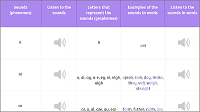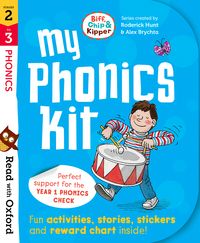Phonics guide
Phonics is the method used by primary schools in England to teach children to read. When your child is learning to read using phonics, there are two crucial things that they will be taught:
- The sounds represented by written letters.
- How to blend the sounds together to make words.
Supporting your child as they learn to read using phonics is the most important thing you can do to help them at school. On this page, you'll find some videos to explain phonics and how you can support your child at home, along with a helpful audio guide to help you learn how to say the 44 phonics sounds correctly.
Watch our fun introduction to phonics, get tips for supporting phonics learning at home and listen to our audio guide on how to say the 44 phonics sounds.
When your child is learning to read there are two crucial things to learn:
- The sounds represented by written letters.
- How to blend the sounds together to make words.
Synthetic Phonics is a way of teaching reading. Children are taught to read letters or groups of letters by saying the sound(s) they represent – so, they are taught that the letter l sounds like llllll when we say it. Children can then start to read words by blending (synthesising) the sounds together to make a word.
At school, you will probably hear teachers talking about blending , but you might also hear them refer to sounding out , depending on which phonic scheme your child’s school is using. All these terms focus on the same point – synthesising sounds .
What is taught first?
Children are first taught a small group of sounds, then learn to blend the sounds to read words made up of those sounds, e.g. mat. Then they are taught more sounds and learn to blend those too.
The order in which the sounds are taught will vary depending on which scheme is used at school, but it won’t be alphabetical order because that’s not the best order to allow your child to start blending the sounds for reading. Schools can tell you about their chosen scheme and in what order the sounds are taught.
Speedy recognition of the sound for each letter is really important too, so your child can blend them to read words easily.
Packed full of fun activities, engaging stories and useful tips, this kit provides you with everything you need to support your child in the lead up to the national phonics screening check for 6-year-olds. Practise phonics skills with three fun activity workbooks and three phonics storybooks to share.
Find out more
 Read with Oxford
Read with Oxford




